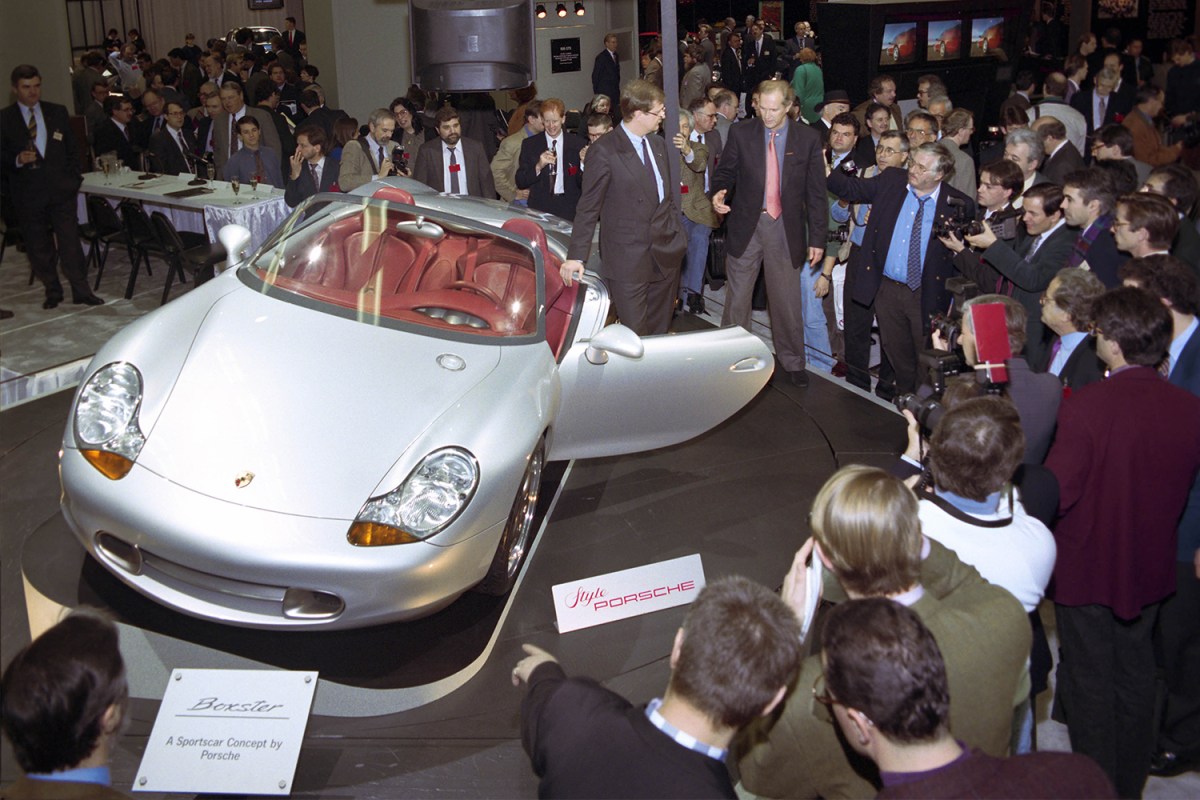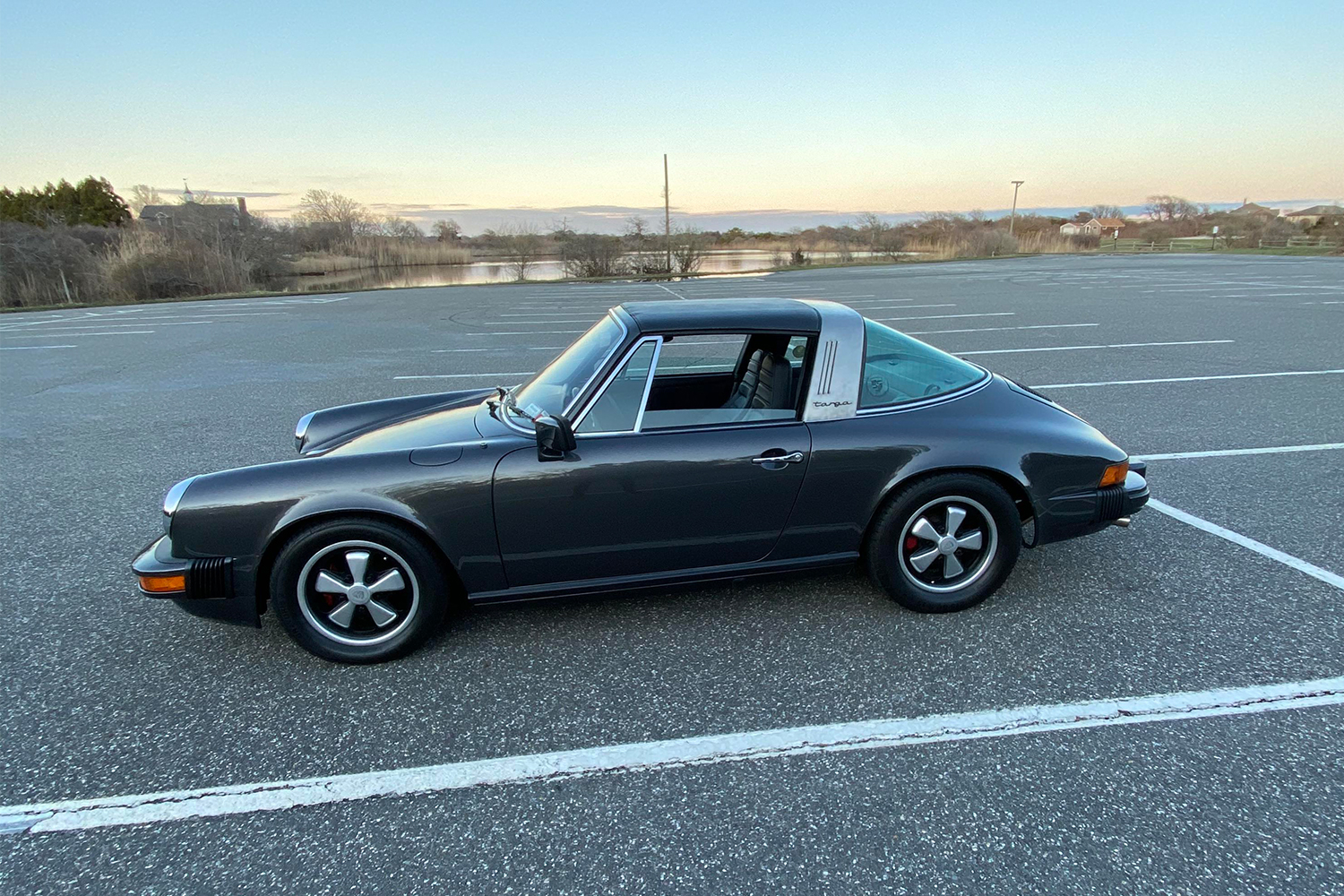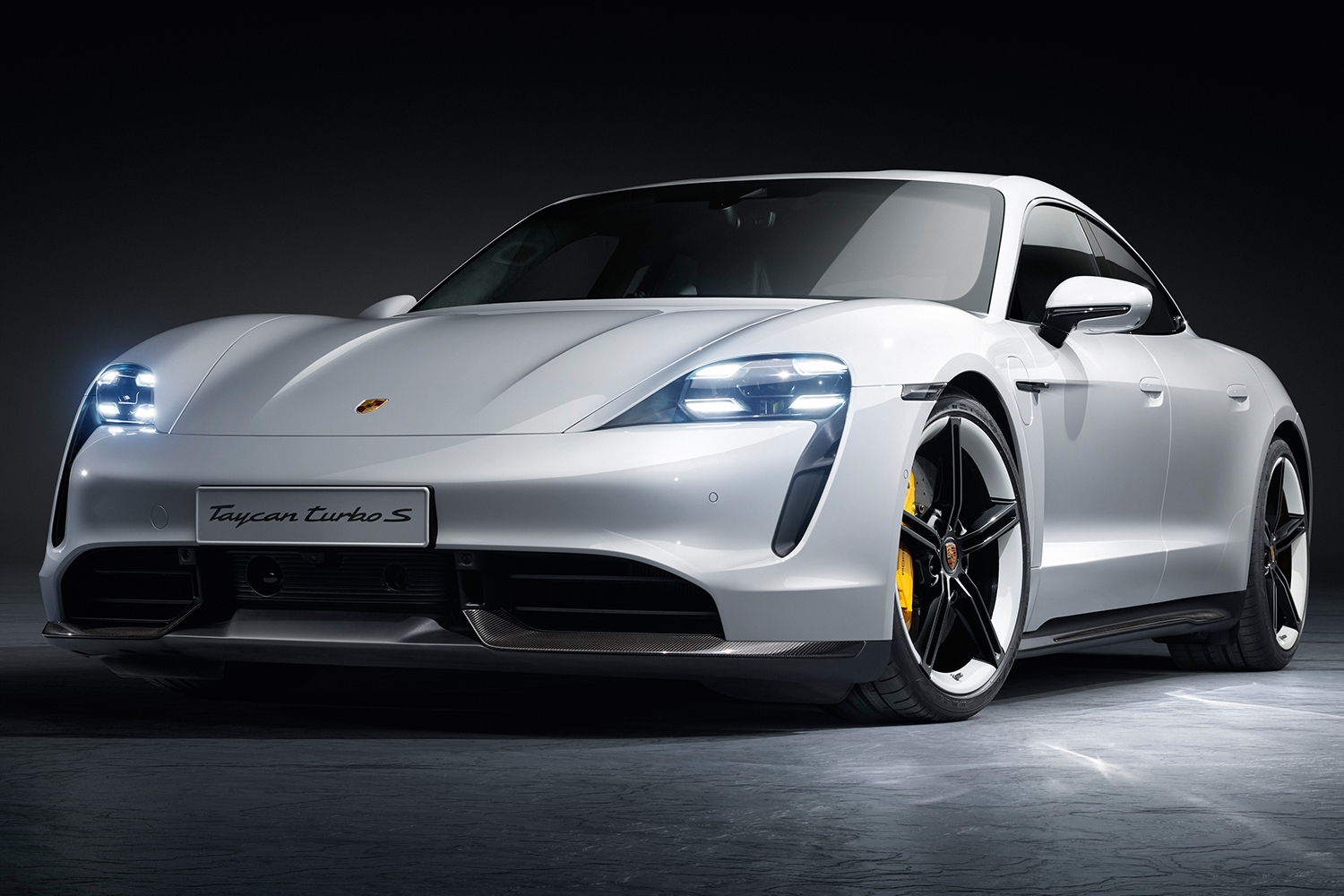The Porsche Museum is a floating monolith situated on a roundabout in Stuttgart, Germany. (If you’re making a post-pandemic travel bucket list and have only seen it during the Super Bowl, go ahead and slot this in.) At night, the Delugan Meissl design could easily pass for the headquarters of a Bond villain. But despite the sprawling structure — which contains the history of an automotive icon that stretches back to the 1930s — the curation is sparse. Only 80 or so vehicles are exhibited at a time.
The typical tourist might gravitate towards the eye-catching liveried race cars from Le Mans, like the red and white Salzburg or a particularly eccentric model known as the “Pink Pig.” A Porsche admirer may stick to the classics, from a body of the Type 64, which preceded any official cars, to the original 356s. A true devotee, however, will make a beeline for a concept car that effectively saved the brand from extinction: the laudable 986 concept, more commonly known as the 1993 Porsche Boxster.
Admittedly, the Boxster occupies an odd place in the marque’s lineup at present. While Porsche on the whole is regarded with well-earned respect, the Boxster doesn’t always receive the same niceties.
To start, the Boxster is on the lower end of the Porsche price scale, which isn’t in and of itself problematic, but has led to its reputation as one of the most affordable used sports cars. On the media side, news outlets and car blogs still occasionally get the name wrong (the unfortunate “Boxter” typo), which is as cringeworthy as it is disrespectful. And on a personal note, my neighbor owns one and — no lie — keeps it on the street. Like we said, disrespectful. But if it were not for this Porsche, the one we now associate with Elle Woods in Legally Blonde, we may not have a Porsche. Period.
That sounds hyperbolic, but here’s how the late John Lamm, a longtime automotive journalist, described the situation at Porsche in his 1998 book on the Boxster: “Looking back now, it’s even difficult to remember how dire Porsche’s situation seemed in those first years of the 1990s. In just the United States, the company’s sales fell precipitously from a high of 30,471 in 1986 to only 3,728 in 1993.” That’s a staggering crash in just seven years.
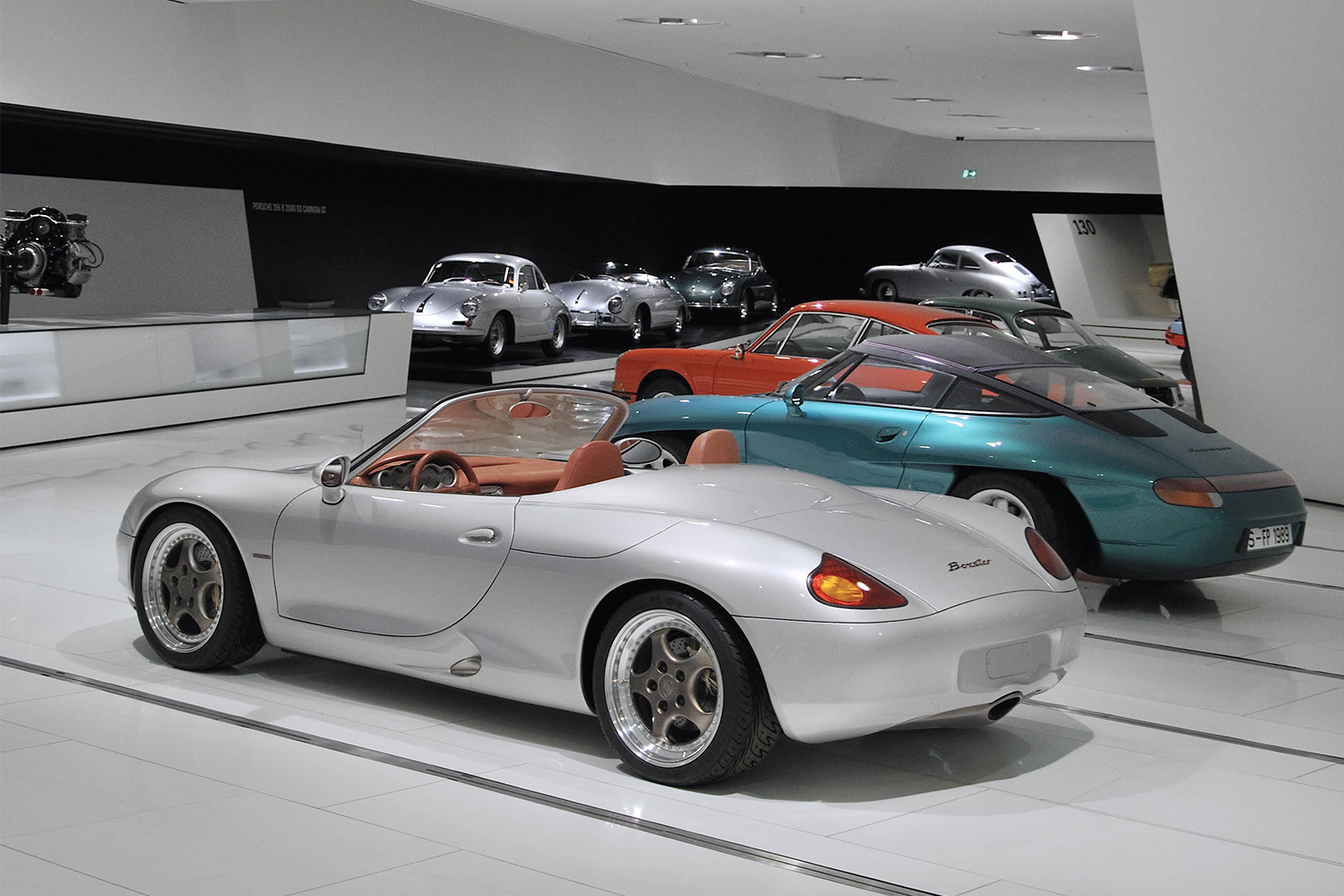
It’s a complicated picture, but one of the most telling signs of the market at the time was the 1989 introduction of the Mazda Miata — now the first name in affordable sports cars — which offered a much cheaper alternative to Porsche (and won accolades from big magazines like Car and Driver and Automobile). It’s no 911, but in the wallet department, the Miata mopped the floor.
The Japanese car industry had another huge effect on Porsche through its advances in production. The German automaker was on “the brink of bankruptcy in 1992,” according to The New York Times, and one way they dug themselves out was by bringing in former Toyota employees to radically increase efficiency. They “would wave their fingers, demand explanations, scold, lecture and browbeat, essentially telling some of Germany’s finest automobile craftsmen how poorly they were doing their jobs,” wrote the Times. And you know what? It worked.
That streamlined process and unorthodox thinking bled into the company’s plans for the 1993 North American International Auto Show in Detroit. Despite not being “known for concept cars,” as Hagerty explained, the company “needed one to generate buzz.” Thus, while designing a new version of the unflaggingly popular 911 (internally known as the 996), they simultaneously worked on the 986, a car that would share many elements of the 911 while also drawing inspiration from the dramatic curvature of the 550 Spyder and 718 RSK. It was an affordable sports car, but with the soul of a race car.
When it came time for Detroit in January of ‘93, Porsche had decided to name it something catchier than the traditional numeral nomenclature — this was just a concept, after all. Per a suggestion from staff designer Steve Murkett, they called the brand-new entry-level Porsche the Boxster, a portmanteau of “boxer” (in reference to the engine) and “roadster” (for the two-seat, open-top body).
Here’s how Porsche describes the reveal: “The organisers ban the crisis-ridden Swabians to a quiet corner of the exhibition centre. But all at once, the small Porsche stand becomes the big attraction.” That’s not just bloated marketing copy, folks.
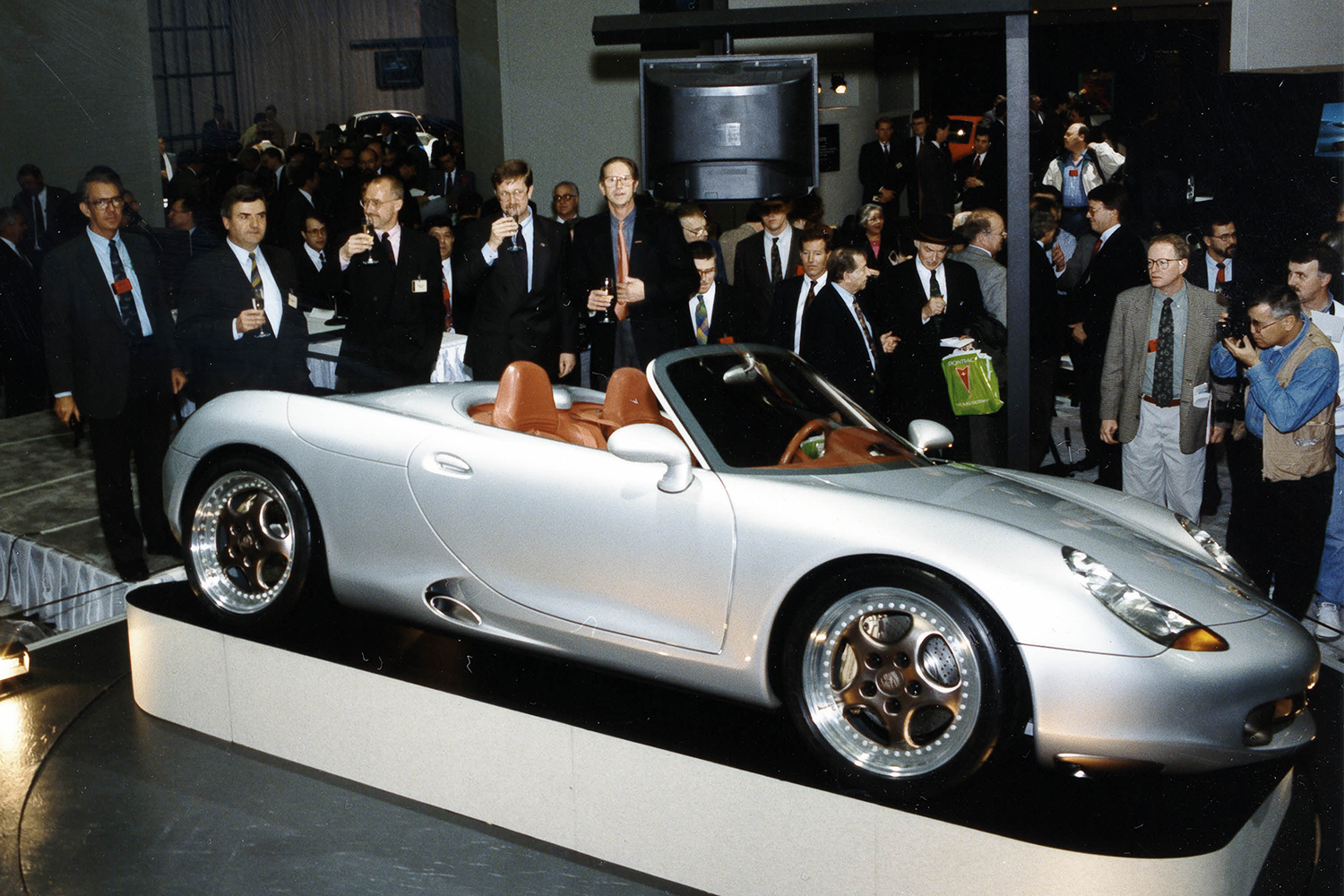
Autoweek magazine named the Boxster “Best in Show” in its subsequent issue, writing of the fervor, “Auto execs almost outnumbered the journalists at the unveiling of a concept that figures to be the basis of a sub-$40,000, mid-‘90s model-year roadster.” Porsche adds that attendees even wrote blank checks for the car, which, again, was a concept with no concrete delivery date. (And people think the preorders for the Tesla Cybertruck and Hummer EV are a new phenomenon.)
The part where the car goes from concept to its final form (it debuted in Europe in ‘96 and the States in ‘97) is less important than the lessons Porsche learned in producing it. Some are relatively benign, like the naming conventions: because the Boxster title was such a hit, every new Porsche since has had a similar, non-numerical name (Cayenne, Panamera, Taycan, etc.). Then there’s the financial sea change, as recorded by Road & Track: “Between 1996 and 2003, the Boxster was Porsche’s best-selling model until the Cayenne came along. And by 2007, buoyed by a growing lineup, Porsche had become the most profitable automobile manufacturer in the industry on a per-unit basis.”
No longer were they “the one-hit wonders from Stuttgart,” as the International Herald Tribune somewhat unbelievably called Porsche upon the debut of the Boxster. Now, they were in it for the long haul, and the last two decades have allowed the entirety of Porsche’s archive to be reconsidered and appreciated — even forgotten models like the 968 and Volkswagen-branded 914 have champions today.
Let that be a lesson to anyone who claims the downfall of Porsche at the hands of the SUV. Those models have now usurped the Boxster’s place as the marque’s financial savior — in 2019, the Macan and Cayenne made up 67% of all sales in the U.S., while the 718 took just 6% — and they’re financing the continued development of the purist’s 911 as well as revolutionary cars like the electric Taycan.
Once upon a time, the Boxster kept the 911 afloat. Now, maybe it’s time for the Boxster to take up the mantle as the enthusiast’s car, while the Macan foots the bill.
This article was featured in the InsideHook newsletter. Sign up now.
